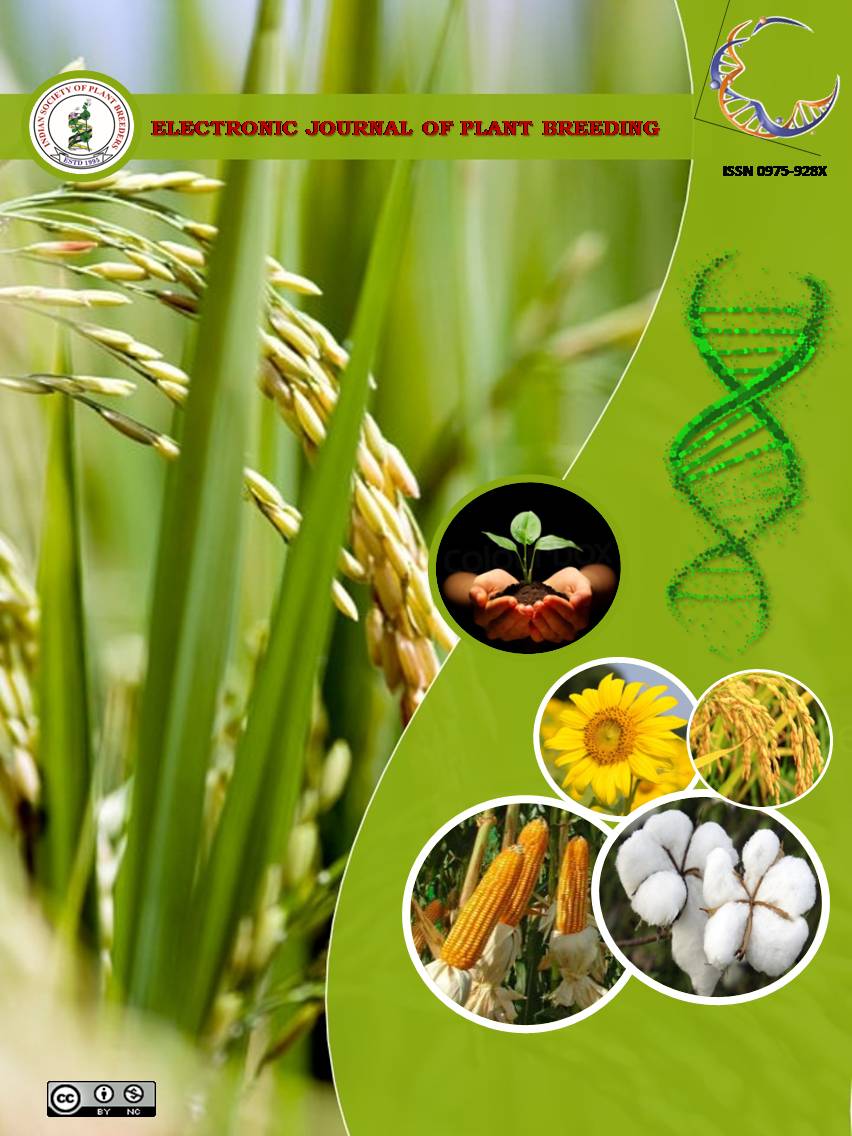Molecular diversity analysis of maize (Zea maysL.) inbreds using SSR markers
Abstract
Maize is the third most important cereals. Inbreds are the widely used parental material in the hybridization program. Many of these accessions have specific features, but only a few of them have been utilized in maize improvement programs.There is an important role of understanding the genetic diversity among and within inbred lines at the molecular level for maize improvement. The present investigation consists of 25 maize inbreds collected from the All India Co-ordinated Maize Improvement Project, Department of Genetics and Plant Breeding, IASc, BHU, Varanasi, were analysed for diversity using a total of 40 SSR markers during rabi 2015-16. Dendrogram was constructed based on UPGMA from the Jaccard’s similarity coefficient and the inbreds were subjected to cluster analysis. Among the 40 SSR markers used only 20 found informative (polymorphic) with total 70 alleles, provide a reference for determining the Simple Sequence Repeats (SSR) alleles number in genetic relationship analysis of maize inbred line and other crop germplasm. The PIC value ranged from 0.286 (umc226) to 0.966 (csu308) with an average PIC of 0.736. The first three PCs contributed 23.70, 7.63 and 6.73% respectively, with a cumulative variation of first 3PCs was 38.07%. The cluster analysis indicates inbred HUZM 252 and HUZM 265 are highly diverse. The present study has indicated the need for evaluating the component lines derived from each cluster. Cluster analysis indicates there is an enough diversity found between the inbreds tested and the information on diversity of inbred lines generated in this study would be much useful in developing heterotic hybrids.

It is certified that:
- The corresponding author is fully responsible for any disputes arising due to the publication of his/her manuscript.
- The article has been seen by all the authors who are satisfied with its form and content.
- The sequence of names of authors in the by-line is as per their relative contribution to this experiment, giving due credit to all scientists who made notable contribution to it.
- All the authors fully understand that inclusion of any other co-authors or exclusion of any co-authors is not possible once the article has been submitted to the journal.
- The corresponding author takes full responsibility for this article.
- The address of the organization where the research was conducted is given.
- The article is exclusive for this journal, and the results reported here have not been sent (and will not be sent during its consideration by this journal) for publication in any other journal.
- Authors agree to abide by the objective comments of referees and do agree to modify the article into a short note as per the recommendation, for publication in the Electronic Journal of Plant Breeding.
- If published in Electronic Journal of Plant Breeding, the copyright of this article would vest with the Indian Society of Plant Breeders, who will have the right to enter into any agreement with any organization in India or abroad engaged in reprography, photocopying, storage and dissemination of information contained in it, and neither we nor our legal heirs will have any claims on royalty.


